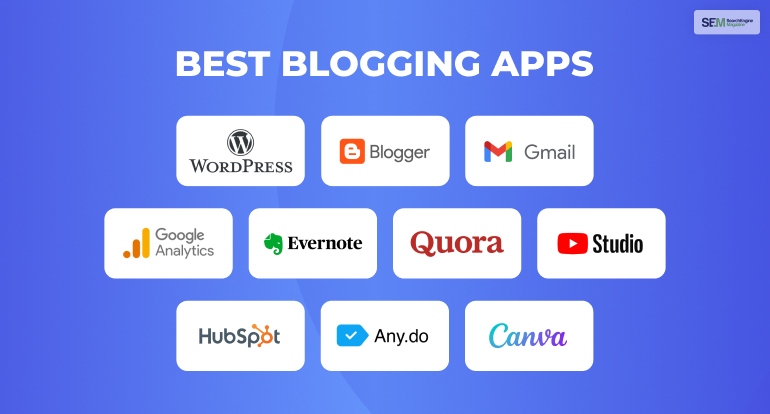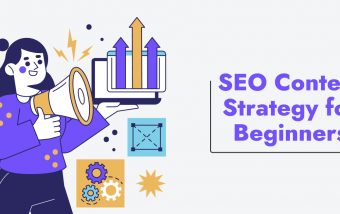Ahrefs Vs Semrush: Which Is The Better SEO Tool In 2025?
Apr 08, 2025

Apr 08, 2025

Mar 29, 2025

Mar 29, 2025

Mar 29, 2025

Mar 29, 2025

Mar 29, 2025

Mar 27, 2025

Mar 27, 2025
Sorry, but nothing matched your search "". Please try again with some different keywords.


In today’s digital world, a strong online footprint is essential for any establishment, especially educational institutions. Websites and blogs for colleges serve as key platforms to draw prospective students, highlight campus life, and share essential details. However, merely owning a website or blog doesn’t suffice. The magic lies in crafting content that truly connects and serves its purpose.
Content optimization can be likened to refining a message to captivate its readers while also catching the eye of search algorithms. Just as students might seek out DoMyEssay professional essay writers during stressful academic times, a finely-tuned college website can stand as the go-to hub for curious prospective students.
Before diving deep into optimizing content, it’s imperative to grasp who your primary audience is. Take the time to conduct comprehensive surveys, gather insightful feedback, and deeply analyze the website traffic patterns. This will paint a clearer picture of what prospective students and current attendees are genuinely seeking from the institution’s online presence.
Students’ worries and questions are multifaceted — spanning from course curriculums to campus amenities and even assignment structures. By actively addressing these in your content, you not only provide clarity but also present an image of an institution that cares. Highlighting your college’s unique strengths while offering solutions to common concerns can immensely enhance user trust.
In the vast realm of SEO, the integration of keywords stands paramount. Beyond the general terms like college, studying, and assignments, delve into niche keywords that resonate with your institution’s offerings. Leveraging tools such as Google’s Keyword Planner can simplify this hunt.
Often overlooked, these concise descriptions can make or break a searcher’s decision to click. Crafting descriptions that are both inviting and informative ensures you capture the curiosity of potential students.
The modern student often browses on the go. It’s no longer sufficient for a website to be merely mobile-friendly. It needs to be mobile-optimized. This encompasses rapid page load speeds, intuitive navigation, and content that adapts flawlessly to various screen sizes.

The adage that a picture is worth a thousand words has evolved. In today’s digital age, a well-crafted video or infographic can convey complex messages with simplicity. Imagine showcasing a day in the life of a student or illustrating intricate academic processes through engaging visuals.
Beyond static content, interactivity plays a crucial role in keeping a visitor’s attention. Interactive campus maps, engaging quizzes about college history, or polls about upcoming events can transform passive viewers into active participants.
The digital world is in constant flux. To remain relevant and current, regular content updates are non-negotiable. Whether it’s spotlighting alums achievements, detailing recent campus additions, or updating course specifics, freshness is key. Beyond just ensuring accuracy, refreshing content can reinvigorate interest in your college website or blog.
It’s not just about presenting the latest information but weaving a narrative that captures the dynamic spirit of the campus. Updated content can generate increased traffic, make old content feel new again, and demonstrate to students — both current and prospective — that the institution is proactive and in step with the times.
Strategic internal linking serves dual purposes: it guides visitors seamlessly through the website while bolstering SEO. For example, a blog post discussing time management could lead to a page on the school’s counseling services or academic workshops.
Internal linking is more than just merging related pages. It’s about designing an interconnected user journey. Proper internal linking can lead a visitor on a journey that paints a vivid picture of campus life. It also minimizes bounce rates by offering users more pertinent content to delve into, strengthening their bond with the institution and possibly enhancing enrollment likelihood.
Interaction is mutual. Welcoming opinions, thoughts, and even constructive criticisms strengthens community ties and provides a profound understanding of impactful content.
In a time when everyone desires to be heard, creating a space for feedback on your academic site or blog signifies an embracing stance. It goes beyond just collecting information. It’s about establishing rapport. When students and visitors since their perspectives are valued and considered, it cultivates commitment. Plus, this active feedback channel can address concerns early on, leading to efficient processes and more contented participants.
In the digital landscape, insights drive decisions. Utilize tools such as Google Analytics to monitor website health. Evaluating elements like user locations, trending topics, and visitor actions can yield valuable findings to sharpen your content approach.
While graphs and statistics may seem intimidating at first glance, they unfold a unique narrative. Delving into these analytics exposes trends — identifying standout content, peak user activity times, or regions with heightened engagement. These aren’t merely numbers. They form a roadmap for content development, enabling a bespoke strategy that aligns with the audience’s preferences and desires.
In today’s swiftly changing digital world, fine-tuning content isn’t a luxury. It’s a necessity. Just as the best dissertation writing services support students in their academic endeavors, a well-curated college website or blog can be the compass guiding prospective students through their university selection. Acting as the digital gateway to the institution, a website’s content that is polished, captivating, and timely can make your college stand out amidst a multitude of educational options.
Read Also:
Mashum Mollah is the feature writer of SEM and an SEO Analyst at iDream Agency. Over the last 3 years, He has successfully developed and implemented online marketing, SEO, and conversion campaigns for 50+ businesses of all sizes. He is the co-founder of SMM.
View all Posts
Ahrefs Vs Semrush: Which Is The Better SEO To...
Apr 08, 2025
How Data-Driven Hiring Reduces Costs and Impr...
Mar 29, 2025
Why Headless CMS Works Well for EdTech Startu...
Mar 29, 2025
Building Topical Authority to Excel in Search...
Mar 29, 2025
The Impact of Professional Recruitment Servic...
Mar 29, 2025

